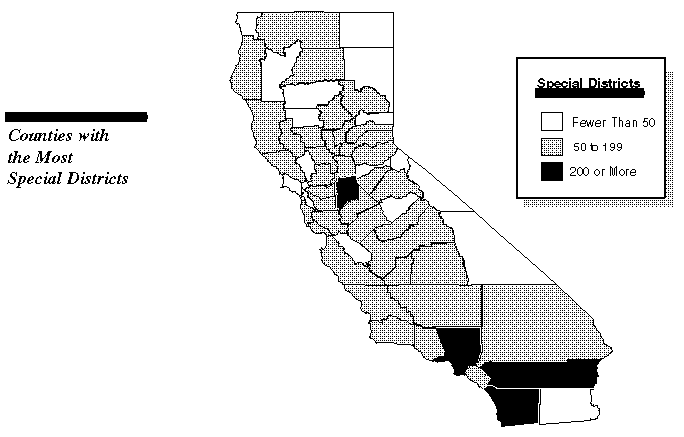
 Legislative Analyst's Office
Legislative Analyst's Office
Special districts are a unit of local government--separate from cities and counties-- which provide public services such as fire protection, waste disposal, water supply, electric utilities, and libraries.
California residents vary in their reliance upon special districts. Some residents receive most of their services from their city or county government, not from special districts. Other residents receive many public services from "independent" special districts (those with independently elected governing boards) and "dependent" special districts (those districts in which the city council or board of supervisors serves as the governing board).
The counties colored in white in the map below have relatively few special districts providing services to their residents. The counties shown in black have over 200 special districts.

Another way to look at the variation in reliance upon special districts is to look at the different ways essential services are provided to county residents. Residents of the counties shown in white in the map below, for example, receive fire protection services from a city- or county-controlled fire department--or a single special district. Residents in the seven counties shown in black, on the other hand, are served by 15 or more fire districts. Each fire district covers a specific geographical area.
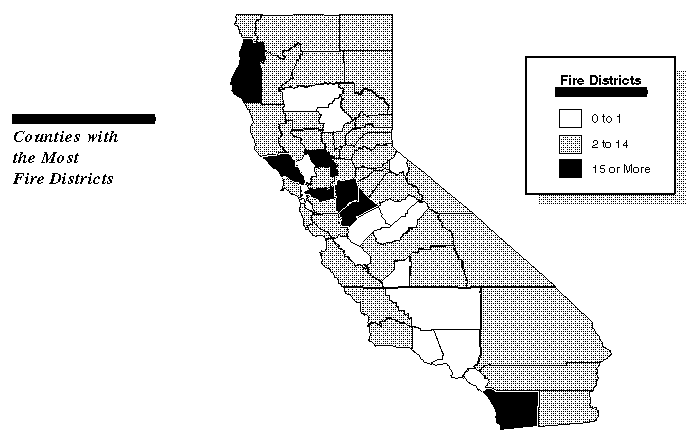
California special district revenues totaled $11 billion in 1991-92. This amount is six times greater than the revenues of California's redevelopment agencies and about half that of California's cities.
As the figure illustrates, water supply, transit, and electric utility districts account for most special district revenues. These "enterprise" districts charge fees to users of their services and are organized like businesses. "Nonenterprise" districts--such as fire, lighting, and streets and road maintenance districts--finance most of their activities from property tax and property assessment revenues.
The figure also shows that special districts collected $1.9 billion in property taxes in 1991-92. The amount represents about 9 percent of statewide property tax revenues. Fire protection, water, waste disposal, flood control, and recreation and parks districts received 85 percent of these special district property taxes. Library, cemetery and memorial districts, in contrast, each received less than 1 percent of special district property taxes.


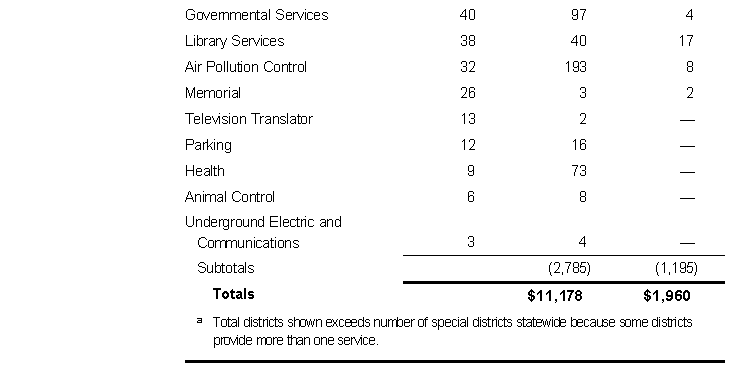
Redevelopment is a process used by communities to correct deteriorated conditions in their urban areas. To start redevelopment activities, state law authorizes each city and county to activate a local redevelopment agency. Working with this redevelopment agency, a community may establish a "project area" and use two extraordinary powers (described below) to undertake activities needed to cure the project area's "blighted" conditions--and provide affordable housing.
Some redevelopment project areas encompass vast acreage. Others span a few blocks in a downtown. Several older redevelopment project areas generate substantial tax-increment property tax revenues; most new projects generate little because of the time required to generate new value.
One way to look at the variation in redevelopment statewide is to examine the share of property taxes collected in a county that is allocated to redevelopment agencies. Local redevelopment agencies in Riverside County, for example, receive a large share of property taxes because the agencies have established many large redevelopment project areas--and the property values in these areas have grown more rapidly than other areas over the years.
Overall, the proportion of property taxes allocated to California's redevelopment agencies has grown steadily over the years. This growth reflects increases in the number of redevelopment project areas in California--and increases in project area property values.
Over the years, the Legislature has voiced concerns that some local redevelopment agencies:
To address these concerns, the Legislature enacted Chapter 942, the Community Redevelopment Law Reform Act of 1993 (AB 1290, Isenberg). This measure strengthens statutory requirements that redevelopment project areas be urban and blighted, limits agency authority to assist retail businesses, and increases the penalties to agencies which fail to spend their housing funds in a timely manner.
REDEVELOPMENT AGENCIES
Redevelopment: A Tool to Mitigate Urban Blight
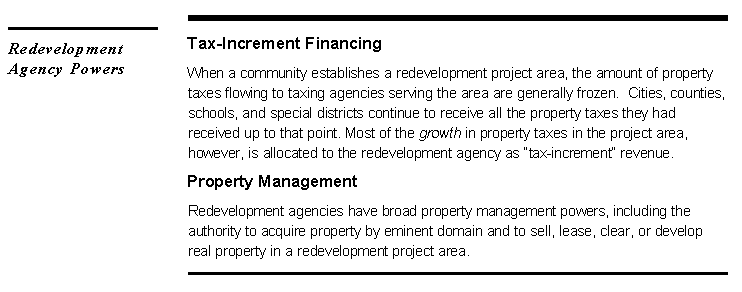
Communities Vary in Their Use of Redevelopment

Redevelopment Share of Property Taxes Statewide Has Grown
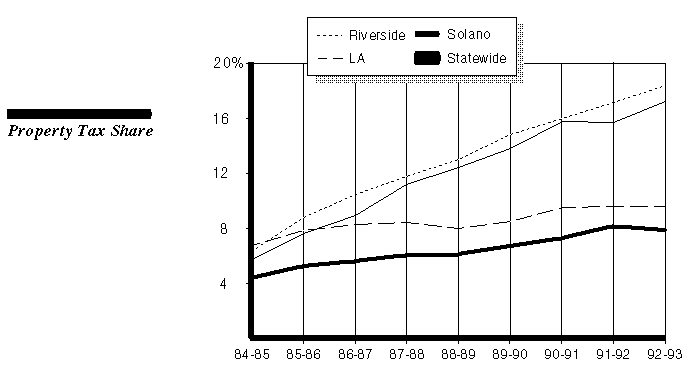
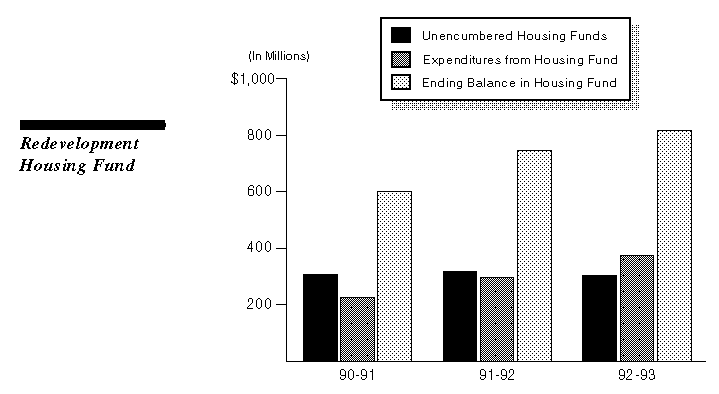
Redevelopment Misuse and Reform